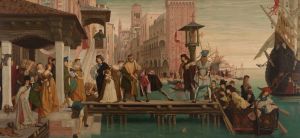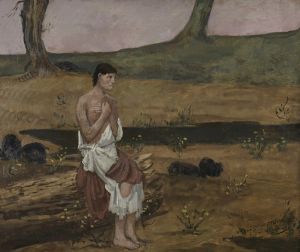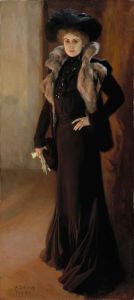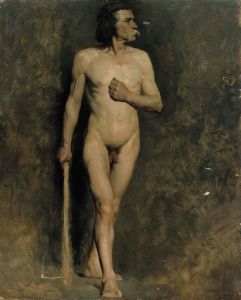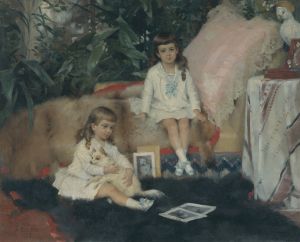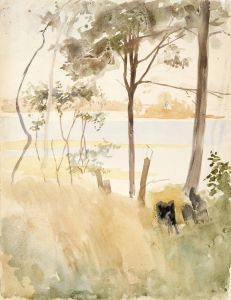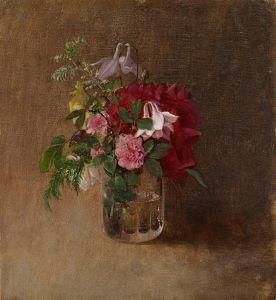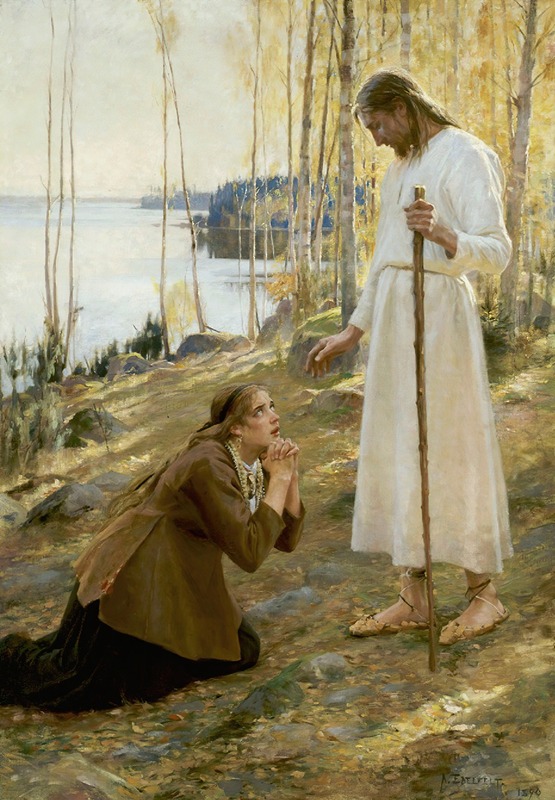
Christ And Mary Magdalene
A hand-painted replica of Albert Edelfelt’s masterpiece Christ And Mary Magdalene, meticulously crafted by professional artists to capture the true essence of the original. Each piece is created with museum-quality canvas and rare mineral pigments, carefully painted by experienced artists with delicate brushstrokes and rich, layered colors to perfectly recreate the texture of the original artwork. Unlike machine-printed reproductions, this hand-painted version brings the painting to life, infused with the artist’s emotions and skill in every stroke. Whether for personal collection or home decoration, it instantly elevates the artistic atmosphere of any space.
Albert Edelfelt's painting "Christ and Mary Magdalene" is a notable work by the Finnish artist, completed in 1890. Edelfelt, born in 1854 in Porvoo, Finland, was a prominent figure in the Finnish art scene and is known for his realistic style and ability to capture the human spirit. He studied at the Royal Academy of Fine Arts in Antwerp and later in Paris, where he was influenced by the French academic tradition and the burgeoning Impressionist movement.
"Christ and Mary Magdalene" depicts a poignant biblical scene that has been a popular subject in Christian art. The painting illustrates the moment after Christ's resurrection when he appears to Mary Magdalene, as described in the Gospel of John (John 20:14-17). This encounter is significant in Christian theology as it highlights Mary Magdalene's role as the first witness to the resurrection, emphasizing themes of redemption and faith.
In Edelfelt's interpretation, the composition is marked by its serene and contemplative atmosphere. The figures are portrayed with a sense of realism and emotional depth, characteristic of Edelfelt's style. Christ is depicted with a gentle and compassionate expression, while Mary Magdalene is shown in a state of awe and reverence. The use of light and shadow in the painting enhances the spiritual and dramatic impact of the scene, drawing the viewer's attention to the interaction between the two figures.
The background of the painting is relatively simple, focusing the viewer's attention on the central figures. Edelfelt's choice of color palette is subdued yet effective, using earth tones and soft hues to convey a sense of tranquility and sacredness. This approach aligns with the artist's broader oeuvre, where he often employed naturalistic elements to enhance the narrative quality of his works.
"Christ and Mary Magdalene" reflects Edelfelt's mastery in blending religious themes with a modern artistic sensibility. His ability to convey complex emotions through subtle gestures and expressions is evident in this work, making it a significant contribution to religious art in the late 19th century. The painting is also a testament to Edelfelt's skill in capturing the human form and his dedication to portraying historical and religious subjects with authenticity and respect.
Albert Edelfelt's works, including "Christ and Mary Magdalene," have been exhibited in various museums and galleries, contributing to his reputation as one of Finland's most esteemed artists. His influence extends beyond his homeland, as he played a crucial role in introducing Finnish art to a broader European audience during his lifetime.
Overall, "Christ and Mary Magdalene" is a remarkable example of Edelfelt's artistic prowess and his ability to infuse traditional religious narratives with a fresh and engaging perspective. The painting continues to be appreciated for its artistic merit and its insightful portrayal of a pivotal moment in Christian theology.







